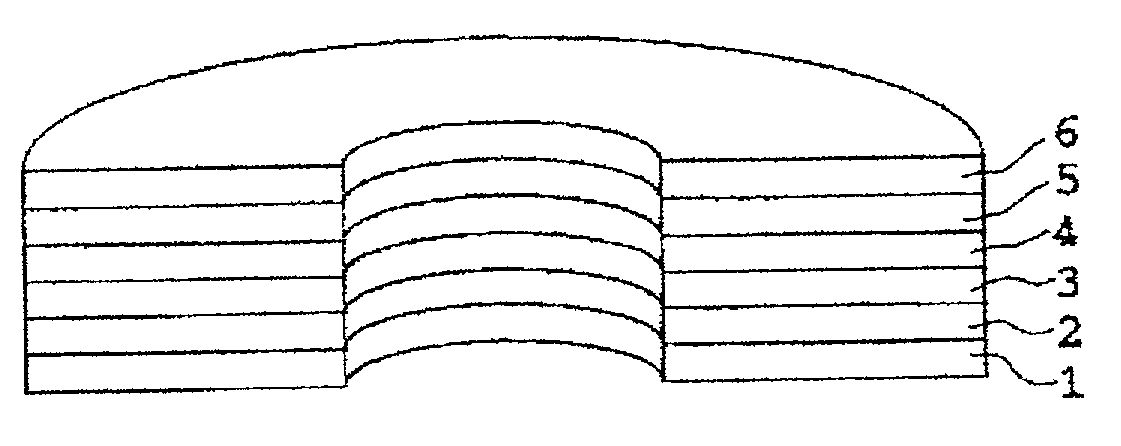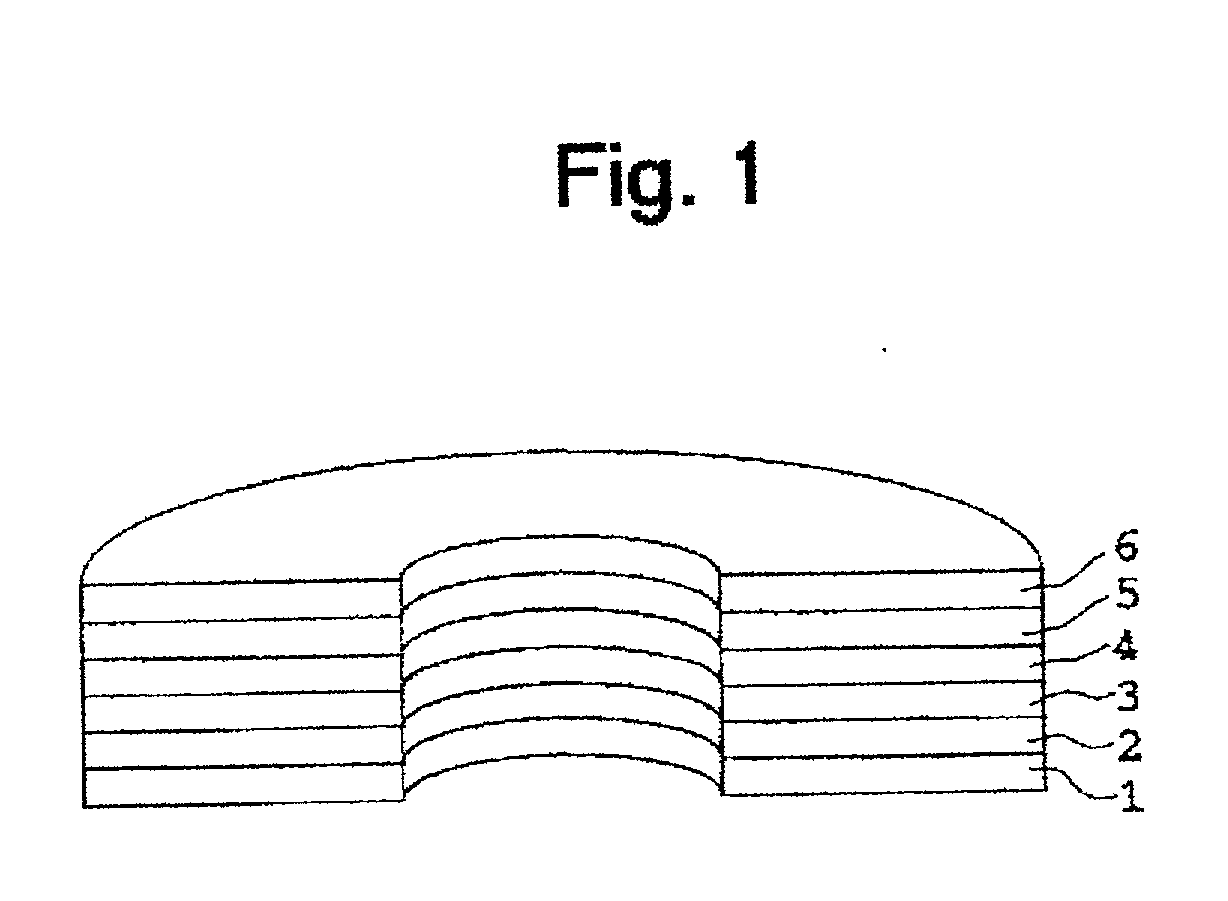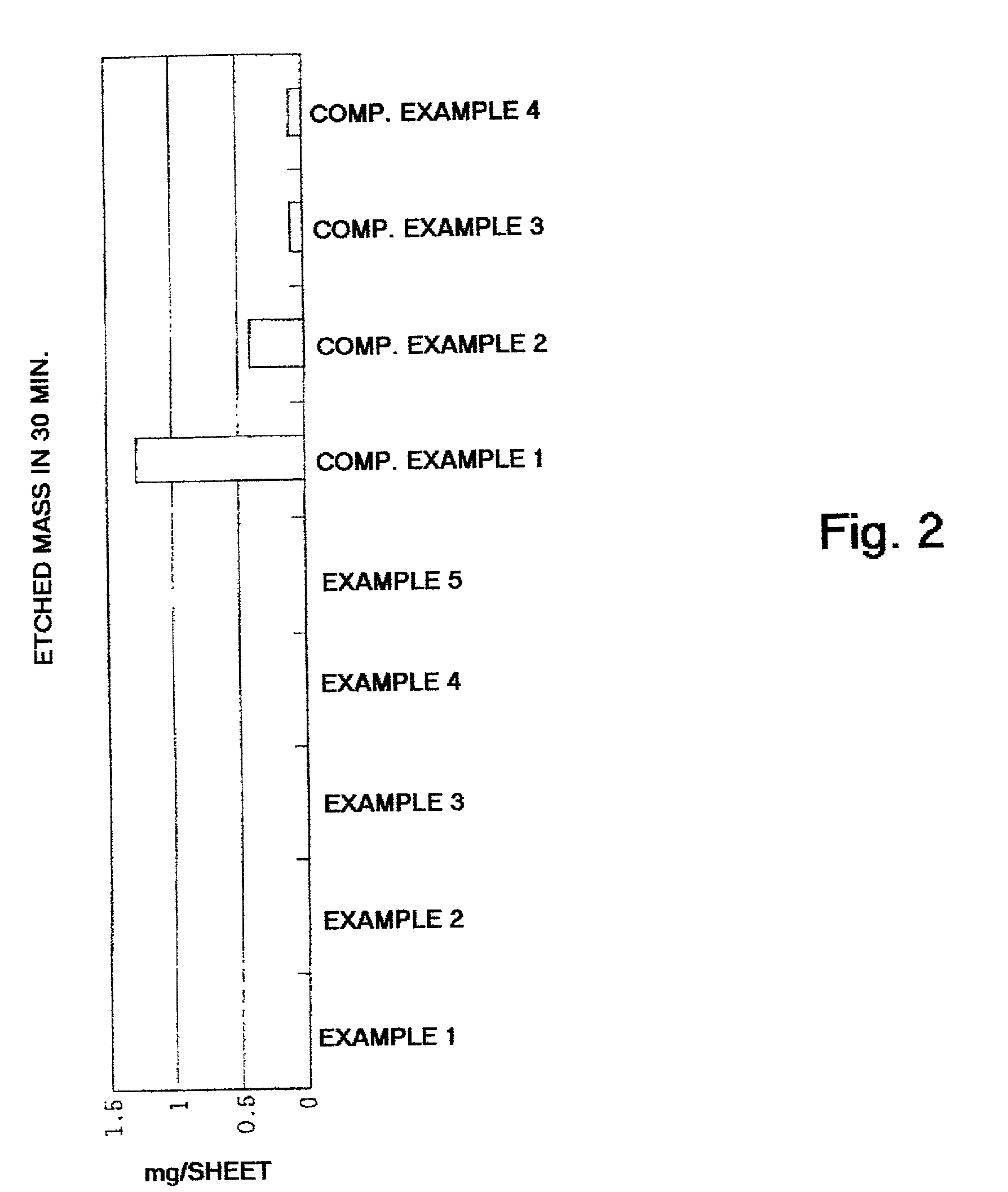Method for cleaning a glass substrate for a magnetic recording medium, a glass substrate cleaned by such a method, and a magnetic recording medium using such a substrate
a technology of magnetic recording medium and glass substrate, which is applied in the direction of magnetic materials for record carriers, instruments, record information storage, etc., can solve the problems of affecting the stability of the head flight, the surface roughness of cleaning with acid, and the inability to read and write in those locations
- Summary
- Abstract
- Description
- Claims
- Application Information
AI Technical Summary
Benefits of technology
Problems solved by technology
Method used
Image
Examples
example 2
[0092] A plurality of glass substrates and a plurality of magnetic recording media were fabricated in the same manner as in Example 1 except that anode water containing 0.5 mM of HCl was used for the cleaning liquid.
example 3
[0093] A plurality of glass substrates and a plurality of magnetic recording media were fabricated in the same manner as in Example 1 except that anode water containing 0.25 mM of malic acid was used for the cleaning liquid.
example 4
[0094] A plurality of glass substrates and a plurality of magnetic recording media were fabricated in the same manner as in Example 1 except that oxygen water containing 1,000 ppm of oxygen was used for the cleaning liquid.
PUM
| Property | Measurement | Unit |
|---|---|---|
| surface roughness | aaaaa | aaaaa |
| temperature | aaaaa | aaaaa |
| temperature | aaaaa | aaaaa |
Abstract
Description
Claims
Application Information
 Login to View More
Login to View More - R&D
- Intellectual Property
- Life Sciences
- Materials
- Tech Scout
- Unparalleled Data Quality
- Higher Quality Content
- 60% Fewer Hallucinations
Browse by: Latest US Patents, China's latest patents, Technical Efficacy Thesaurus, Application Domain, Technology Topic, Popular Technical Reports.
© 2025 PatSnap. All rights reserved.Legal|Privacy policy|Modern Slavery Act Transparency Statement|Sitemap|About US| Contact US: help@patsnap.com



